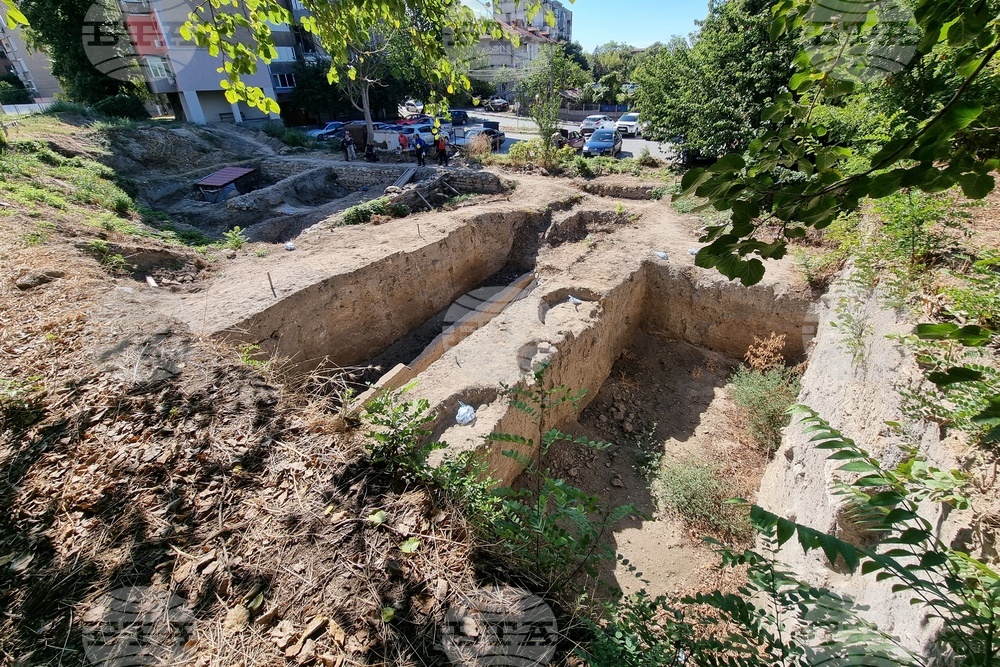site.btaWalls of Roman Fortification from 1st Century AD Discovered in Lom


Walls and ditches of a Roman fortification from the 1st century AD were discovered during archaeological excavations in the Kaleto district of Lom, the head of the excavations, Dr Vladislav Zhivkov, said on Friday. About 400 finds were discovered by the archaeologists in 2024 and all of them will go to the Lom History Museum.
The finds will allow a reconstruction of the entire history of today's Lom in the last 20 centuries. "You can see how over the centuries Lom has been destroyed and rebuilt and how many different tribes and peoples have inhabited the settlement in its long history", Dr Zhivkov said.
The earliest Roman presence is associated with a fortress wall, in front of which are three moats, part of a camp of a Roman military unit that settled here in the first half of the 1st century. The archaeologists also studied a nearby building which is believed to have been Roman barracks or stables. Numerous imported ceramic vessels, mainly from southern Gaul, bronze objects and coins were found in the barracks building. The military camp is believed to have been burned down during a military raid in 180 AD.
At that time, Lom was the border of the Roman Empire with Dacia, and the fortification served to guard it. In the second century, the Romans conquered the province of Dacia and Lom ceased to be a border, but existed as an internal settlement in the empire and a port on the Danube River. Over the centuries, the fortress walls were destroyed and rebuilt several times during the First Bulgarian Kingdom and also during the Second Bulgarian Kingdom. Walls like the ones discovered at Lom are rarely found in the lower Danube from the first half of the 1st century AD, Dr Zhivkov pointed out.
Another find is a ceramic kiln dating back to the 2nd or 3rd century AD. The researchers believe that it could have served for the production of high-quality ceramic dishes with a red glaze. It was used at a time when the ancient settlement of Almus, now Lom, celebrated its economic and cultural prime in the ancient era during the second and first half of the 3rd century AD. The facility has been preserved and can be seen on site.
During the excavations, a clay floor from the 11th century BC was also discovered with broken pieces of vessels. The find dates back to the end of the Late Bronze Age and is the second that testifies to a time when there was an ancient settlement with an adjacent necropolis on the site of today's Lom, Zhivkov noted.
The Lom Town Hall noted that the project funding the archaeological excavations, is worth BGN 6.6 million. The Municipality expects the project to be financed under the Regional Development Programme 2021-2027, aiming to increase the tourist attractiveness of Northwestern Bulgaria through research, discovery, preservation and promotion of the Ancient Fortress of Almus.
/NF/
Additional
news.modal.image.header
news.modal.image.text
news.modal.download.header
news.modal.download.text
news.modal.header
news.modal.text






